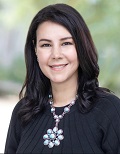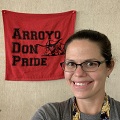Next Gen Navigator
White Science Teachers, Here’s Why Anti-Racism Includes You!
By Peter A’Hearn, Dr. Nancy Nasr and Tara Sikorski
Posted on 2020-10-29
Disclaimer: The views expressed in this blog post are those of the author(s) and do not necessarily reflect the official position of the National Science Teaching Association (NSTA).
Everyone in America seems to be talking about race now. In education, one of the ideas arising from these conversations is “anti-racist” teaching. As a white science teacher, I hear this and wonder, “Is anti-racist teaching for me? Is it my responsibility?” I’m also feeling I’ve arrived late to the game and asking myself – “Should I have been doing this all along?” To help answer these questions, let’s look at anti-racism more closely.
Not being racist isn’t the same as being anti-racist. Anti-racism requires a commitment to social justice and action to stop racism. Becoming an anti-racist teacher starts with the hardest work: working on yourself.
Part of your self-awareness includes knowing that everyone has some beliefs, attitudes, and ways of relating to the world that reinforce racism; these are called unconscious biases. Having unconscious biases does not make you a bad person. Everyone has them as a result of growing up in a racially charged society. Recognizing your own unconscious biases is a start, but we also need to feel comfortable talking about our biases so we can overcome them.
Understanding the historical and scientific context of race is important, as misunderstandings about race often lead to many incorrect ideas. For example, students often believe that race is defined by consistent patterns of genetic traits, and that human “races” are a real outcome of evolution. These ideas are a legacy of some deeply flawed science, like the measurement of skulls and division of humans into separate species that have been completely discredited by modern genetics. To help students overcome these incorrect ideas, science teachers must teach lessons that challenge them. Race is a real part of people’s identities, but it’s a social construct, not a scientific fact. Learning the history of race in America can help you understand why race has such a huge effect on economic and educational outcomes today.
To be an anti-racist teacher, we need to consider classroom culture critically. The fact that some classrooms operate according to white cultural norms automatically disadvantages children from marginalized cultures. To truly embody anti-racism, white science teachers must actively address race in the classroom. Anti-racist teachers can discuss the obstacles that diverse scientists had to overcome and how science can sometimes promote racism, but can be used to defeat it, too.
Ignoring race in the classroom only reinforces “color-blindness,” which ignores the experiences of those from marginalized races. While anti-racist classroom cultures can be achieved by minimizing whiteness, a classroom environment reflective of anti-racism also requires a deeper look at the importance of classroom discourse.
Classroom discourse refers to how teachers and students communicate with one another through language and actions. Overcoming discourses of whiteness requires anti-racist teachers to pay attention to how diverse races are represented in texts, images, and spoken language. For example, anti-racist teachers teaching predominantly urban Black students might allow them to use “Black English” to communicate their scientific ideas. Doing so promotes a discourse of racial equity in which the linguistic identity of students is not silenced in favor of white discourses.
Additionally, anti-racist classroom discourses rely on transparency and opportunities for people to share their lived experiences. By providing opportunities for honest and vulnerable discourse, anti-racist teachers subvert power dynamics that reinforce cultures and discourses of white privilege in the classroom.
Anti-racist teaching also requires us to critically examine the content we are teaching. Using our anti-racist lens, we must ask ourselves hard questions like these:
- What beliefs are present/perpetuated about who gets to do science?
- What beliefs are present/perpetuated in science about race and cultures?
- Are there opportunities to insert anti-racist lessons into our science classes?
For example, we can choose to directly address the fact that Watson (of the famous DNA duo) was a vocal racist and used his research to justify his prejudices, making this a teachable moment illustrating how science has been used as a weapon against people of color. Furthermore, we can introduce environmental justice topics, such as the Flint Water crisis, to spark discussions about racism and use science and policy to be actively anti-racist. Designing content is only one component of anti-racist teaching; it also must be supported by the way we teach it.
Contemporary research on science teaching and learning articulated in A Framework for K-12 Science Education centers the constructivist approach around relevant phenomena. As students engage in doing science, consider what messages are being sent in terms of who holds the knowledge, who is considered “smart,” and who determines what “smart” looks and sounds like within our classroom. We can begin to unpack our instructional choices and practices by considering these questions:
- What phenomena are relevant to our students, their families, and the community?
- When and how do we honor the cultures and diversity of our students?
- When and how do we allow students to make connections to their contexts and experiences?
By anchoring our content delivery in anti-racism through the focus on phenomena, we set the stage for spreading anti-racism in our school communities.
No doubt about it, anti-racist work is hard and it can be daunting to know which step to take next. In the words of Martin Luther King, Jr, “If you can’t fly, then run. If you can’t run, then walk. If you can’t walk, then crawl, but by all means, keep moving.” Speaking from experience, you’ll mess up and that’s okay. What is important is that we keep trying, reflecting on our efforts, and moving forward.
As a white educator, I believe it is critical to have a community with whom we can explore ideas, reflect, and challenge beliefs and biases. Some ideas for establishing or growing that community include: finding an anti-racist buddy or mentor; joining social media groups dedicated to anti-racist work; and/or following and reading works by anti-racist leaders. A commitment to anti-racism is more important than ever, particularly for white teachers, as it is the moral duty of all educators to use their platforms to overcome racism.
Resources
- To get started, here’s a great resource from Lumen Learning on the science of race, and one from the National Museum of African American History on the historical context of race.
- Teaching Tolerance has resources to help you prepare yourself for sometimes uncomfortable discussions about race and racism.
- If you want to modify your content delivery, STEM Teaching Tools has some great ideas and resources focusing on culture and equity in their briefs. Ambitious Science Teaching is a suitable resource for a constructivist approach, and Harvard’s Project Zero has some awesome Thinking Routines.
- Groups and individuals dedicated to anti-racist work include National Equity Project, Teachers 4 Social Justice, Antiracist Education Now, and Coalition of Anti-Racist Biology Teachers, (Ibram X. Kendi, Ijeoma Oluo, Robin DiAngelo, Zaretta Hammond).
- This high school biology unit was developed to teach natural selection and scientifically accurate ideas about race. (This unit is in beta version and should be considered a work in progress.)
- Here’s a scholarly article about teaching about race in the biology classroom.
- Science in the City: Culturally Relevant STEM Education by Dr. Bryan Brown is an exploration of why language and culture matter so much in the science classroom and how we can help all kids succeed.

Peter A’Hearn is a “Science Education Troubadour.” He is currently president-elect of the California Association of Science Educators. He has taught high school biology, physical science, health, and Earth science. He was a Science Teacher on Special Assignment in the Palm Springs Unified School District and a project director for the California NGSS Early Implementers Project. In a past life, A’Hearn was the founding brewmaster of Ballast Point Brewing Company.

Dr. Nancy Nasr is a secondary school science educator, teaching a population of approximately 50% Latinx and black students. Nasr’s continued research interests include cultural responsiveness in the science classroom and developing science curricula rooted in phenomena associated with social justice to empower students to overcome social injustices through the use of science.

Tara Sikorski is in her 17th year in education and teaches Living Earth and biotechnology courses at Arroyo High School in San Lorenzo, California. Before then, she spent six years supporting NGSS implementation and high-quality STEM education for all students as a Teacher on Special Assignment: Instructional Coach.
Note: This article is featured in the October 2020 issue of Next Gen Navigator, a monthly e-newsletter from NSTA delivering information, insights, resources, and professional learning opportunities for science educators by science educators on the Next Generation Science Standards and three-dimensional instruction. Click here to sign up to receive the Navigator every month.
The mission of NSTA is to promote excellence and innovation in science teaching and learning for all.
Equity NGSS Professional Learning old Teacher Preparation Teaching Strategies Three-Dimensional Learning High School


